Mar 24th, 2025
CMS-EXO-23-015
Search for vector-like leptons with long-lived particle decays in the CMS muon system in proton-proton collisions at √s = 13 TeV
A first search is presented for vector-like leptons (VLLs) decaying into a light long-lived pseudoscalar boson and a standard model τ lepton. The pseudoscalar boson is assumed to have a mass of 2 GeV and to decay exclusively into a pair of photons. It is identified using the CMS muon system. The analysis is carried out using a data set of proton-proton collisions at a center-of-mass energy of 13 TeV collected by the CMS experiment in 2016-2018, corresponding to an integrated luminosity of 138 fb−1. Selected events contain at least one pseudoscalar boson decaying electromagnetically in the muon system and at least one hadronically decaying τ lepton. No significant excess of data events is observed compared to the background expectation. Upper limits are set at 95% confidence level on the vector-like lepton production cross section as a function of the VLL mass and the pseudoscalar boson mean proper decay length. The observed and expected exclusion ranges of the VLL mass extend up to 700 and 670 GeV, respectively, depending on the pseudoscalar boson lifetime.
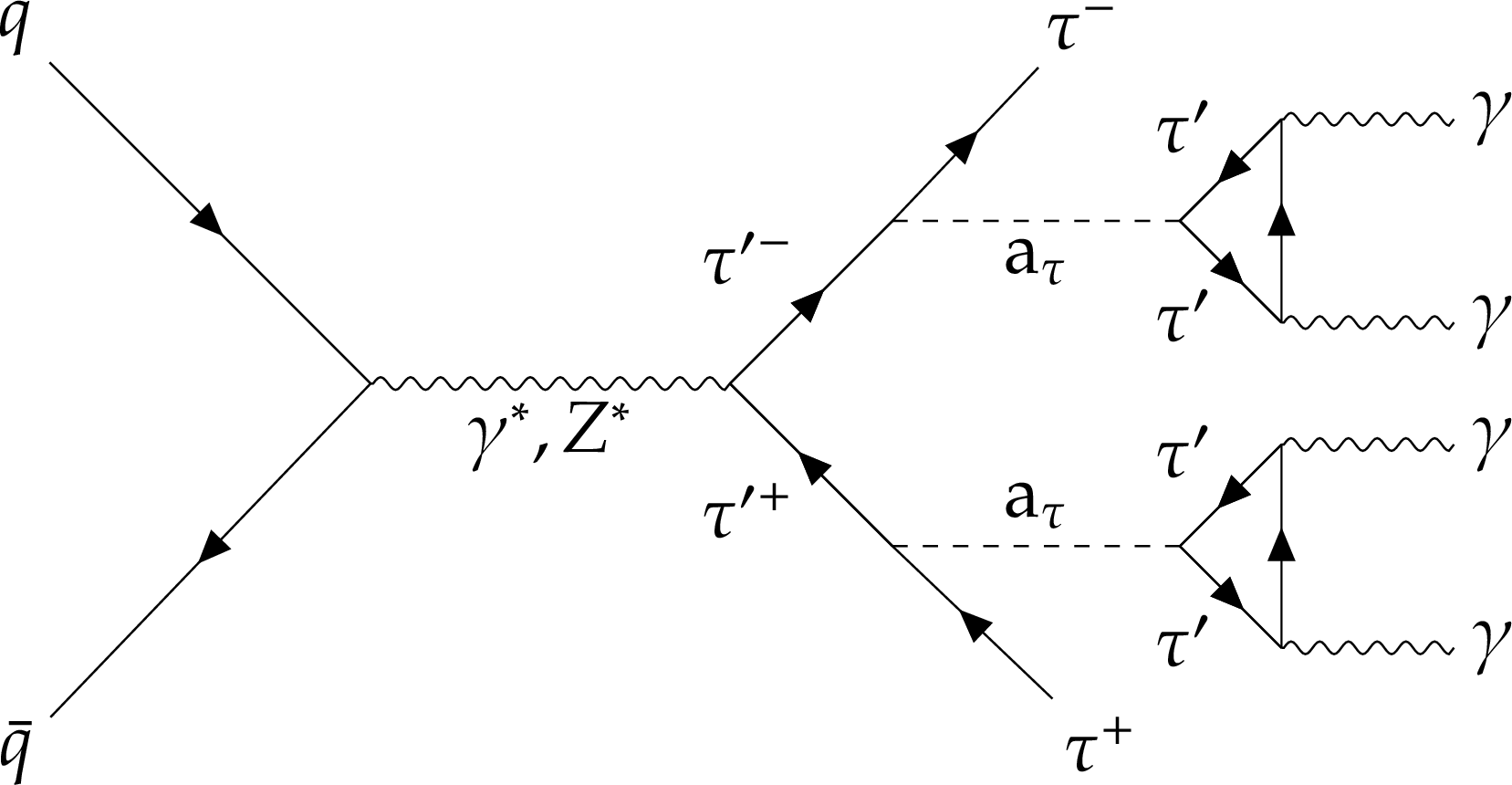
CMS-EXO-23-015
Search for vector-like leptons with long-lived particle decays ...
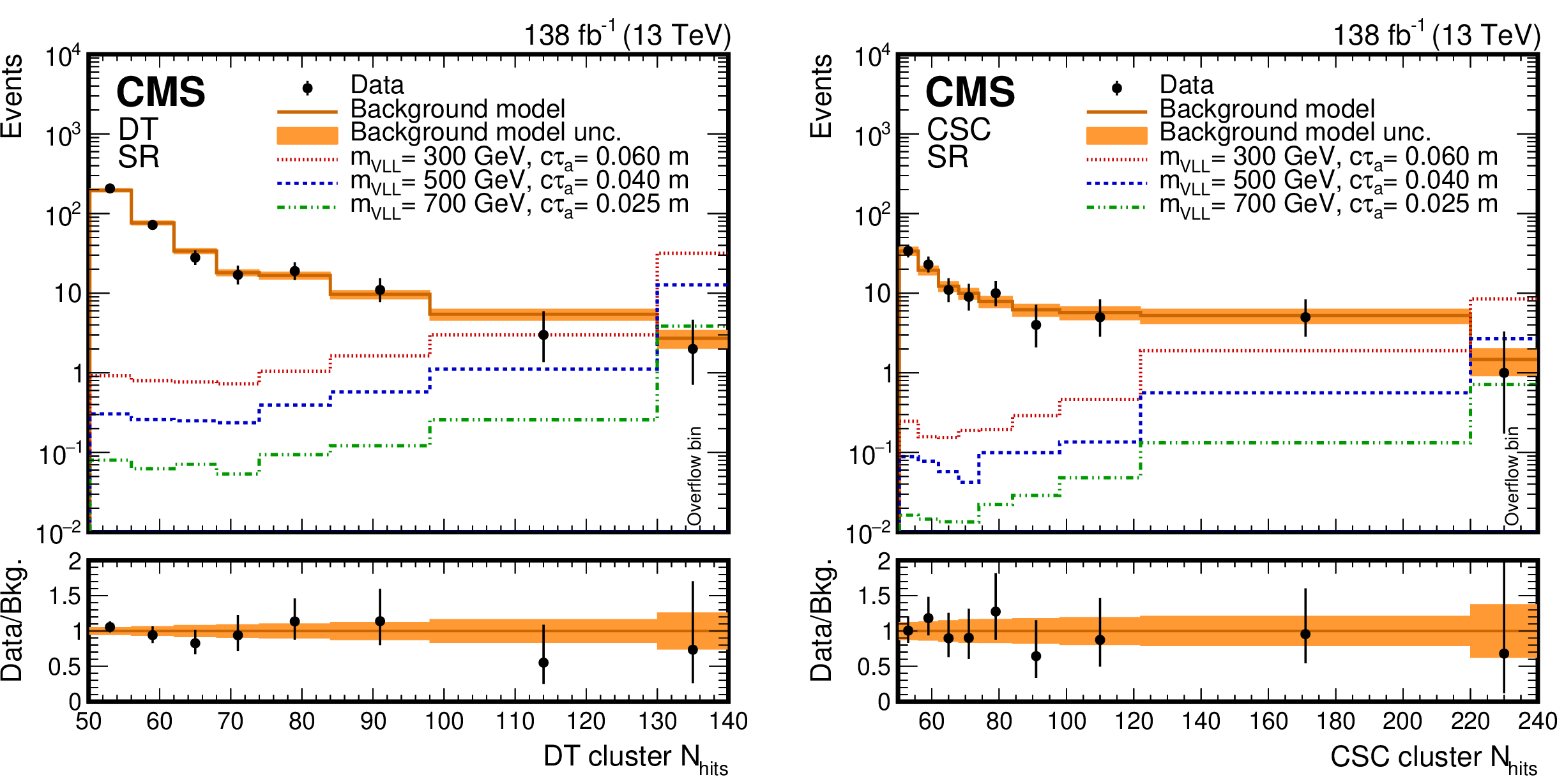
CMS-EXO-23-015
Search for vector-like leptons with long-lived particle decays ...
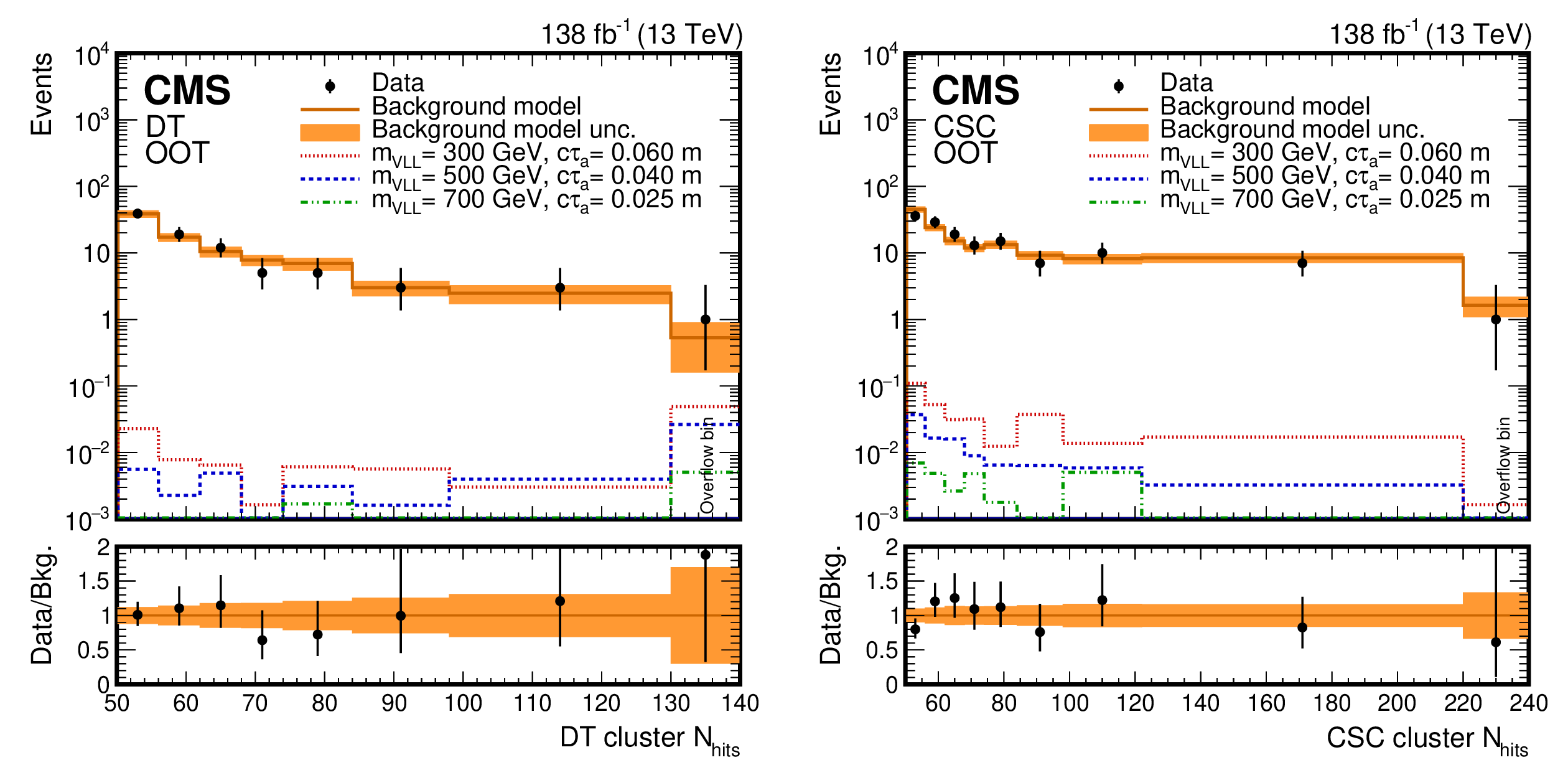
CMS-EXO-23-015
Search for vector-like leptons with long-lived particle decays ...
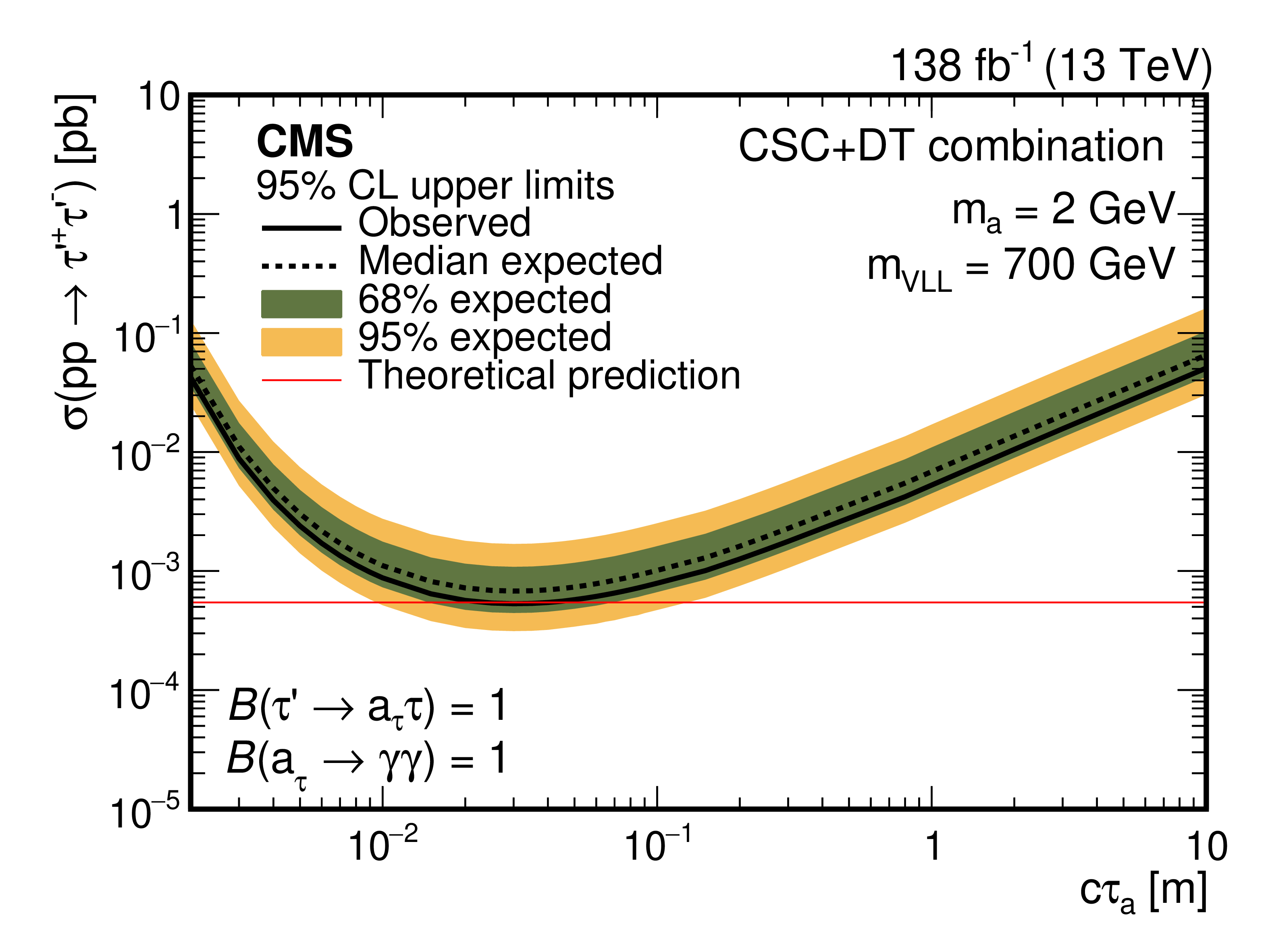
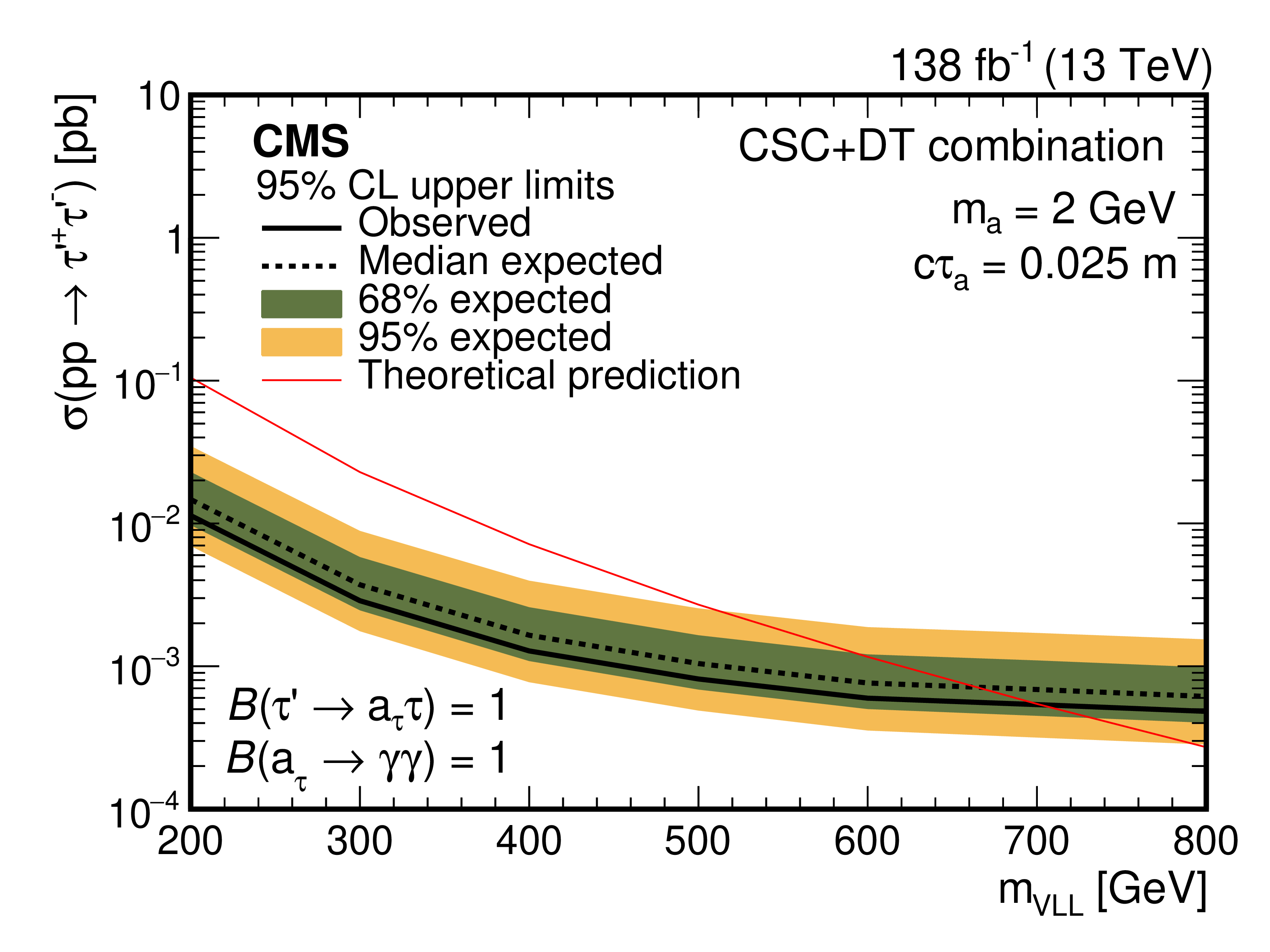
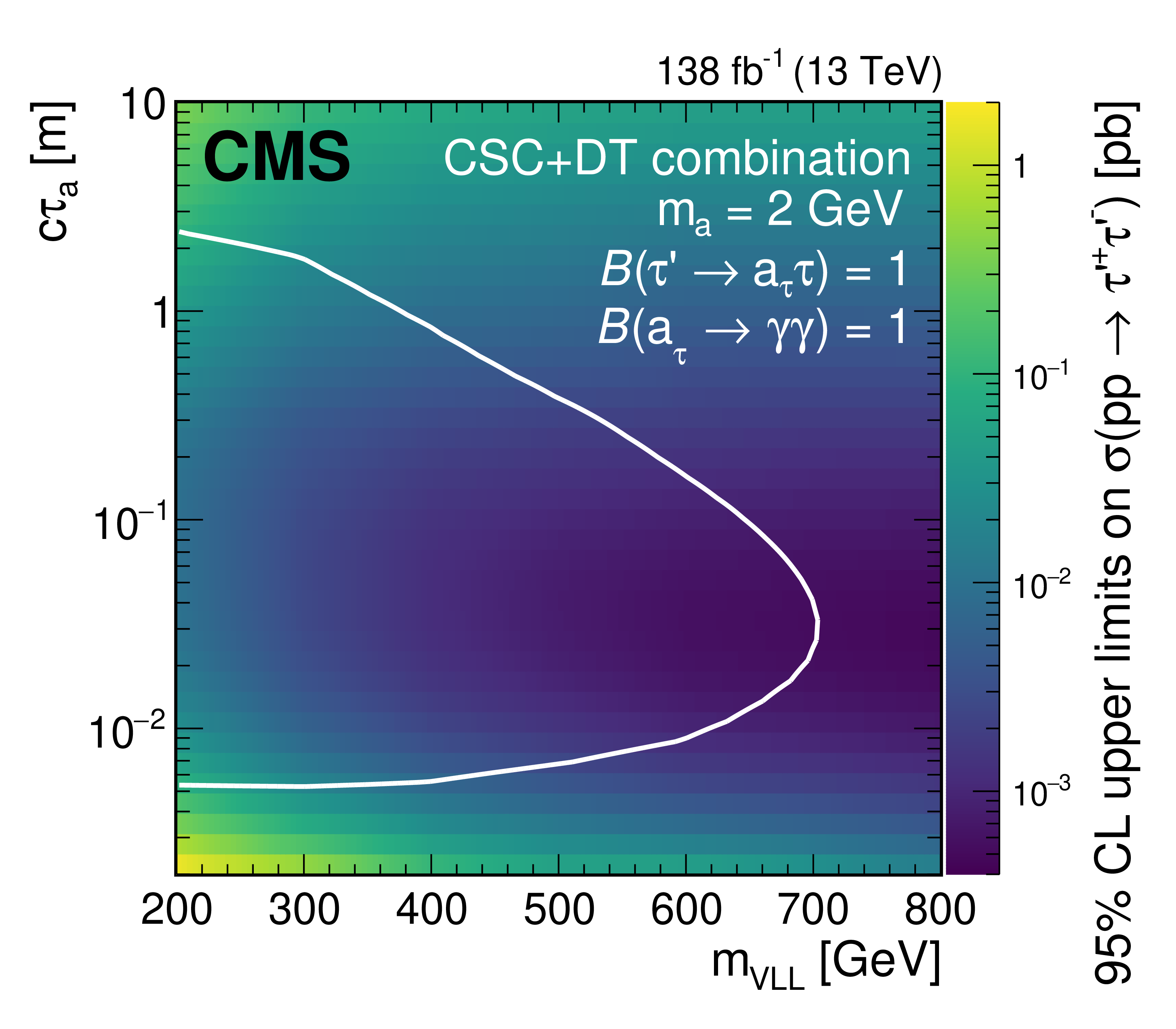
The ATLAS Collab.
Search for heavy neutral leptons in decays of W bosons using leptonic and semi-leptonic displaced vertices in √s=13 TeV pp collisions with the ATLAS detector
A search is performed for long-lived heavy neutral leptons (HNLs), produced through the decay of a W boson along with a muon or electron. Two channels are explored: a leptonic channel, in which the HNL decays into two leptons and a neutrino, and a semi-leptonic channel, in which the HNL decays into a lepton and a charged pion. The search is performed with 140 fb−1 of √s=13 TeV proton-proton collision data collected by ATLAS during Run 2 of the Large Hadron Collider. No excess of events is observed; Dirac-like and Majorana-like HNLs with masses below 14.5 GeV and mixing coefficients as small as 10−7 are excluded at the 95% confidence level. The results are interpreted under different assumptions on the flavour of the leptons from the HNL decays.
The ATLAS Collab.
Search for heavy neutral leptons ...
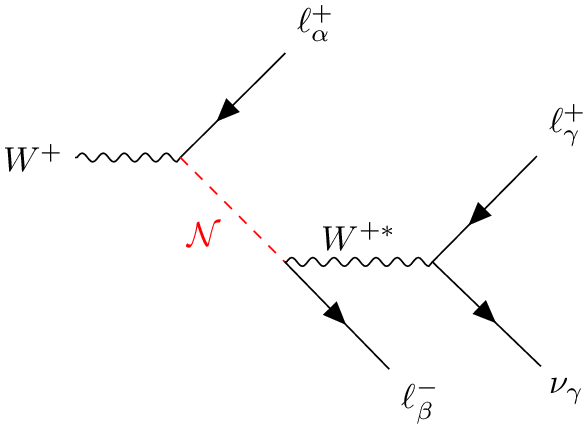
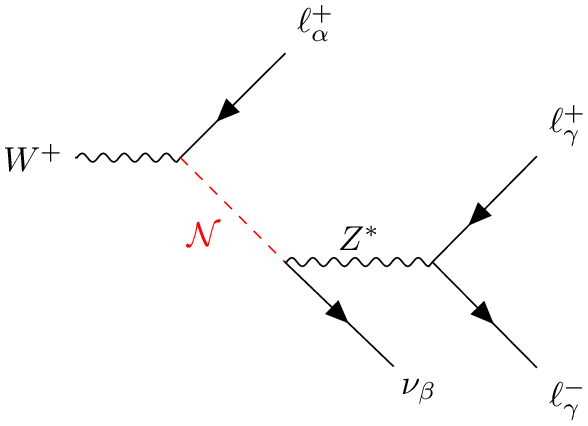
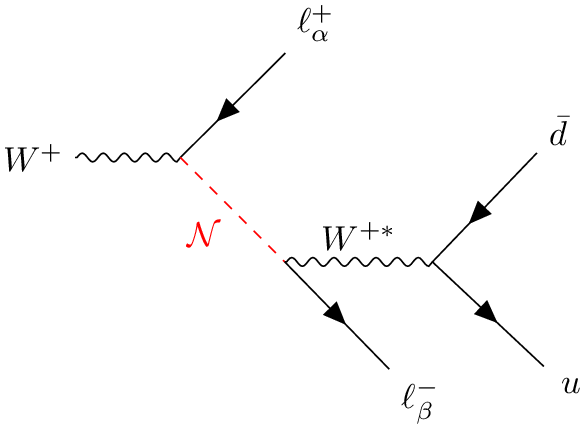
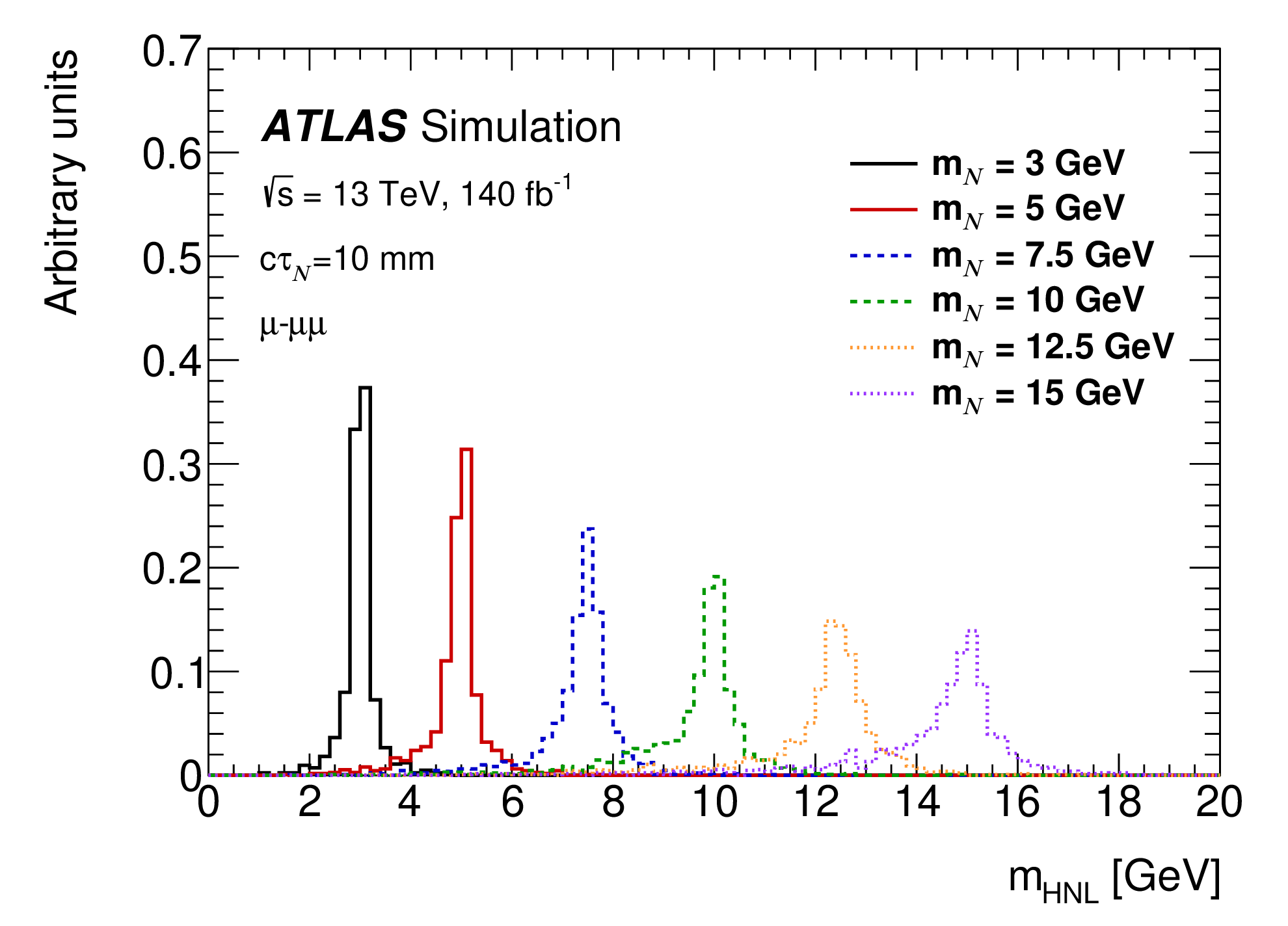
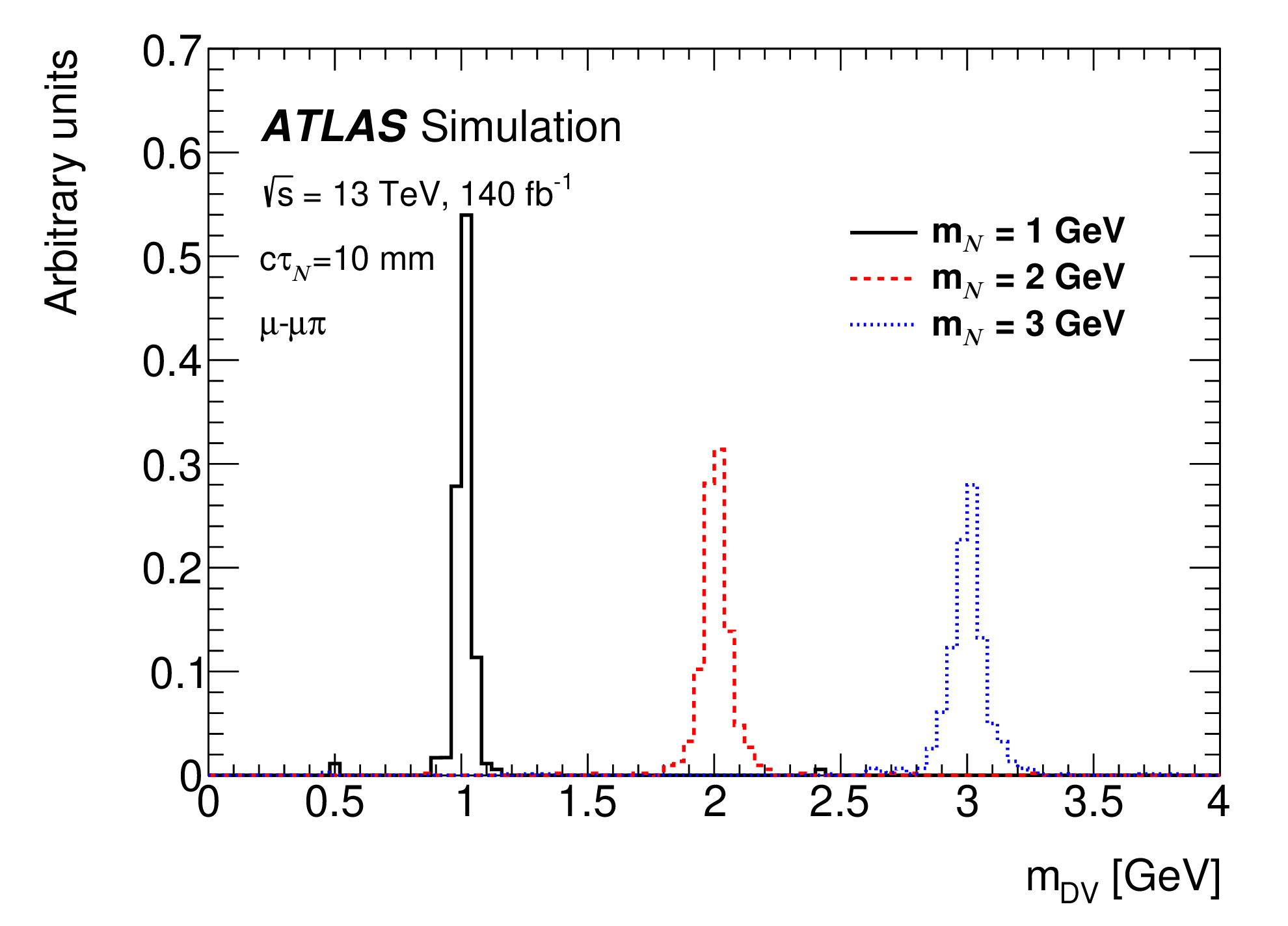
The ATLAS Collab.
Search for heavy neutral leptons ...
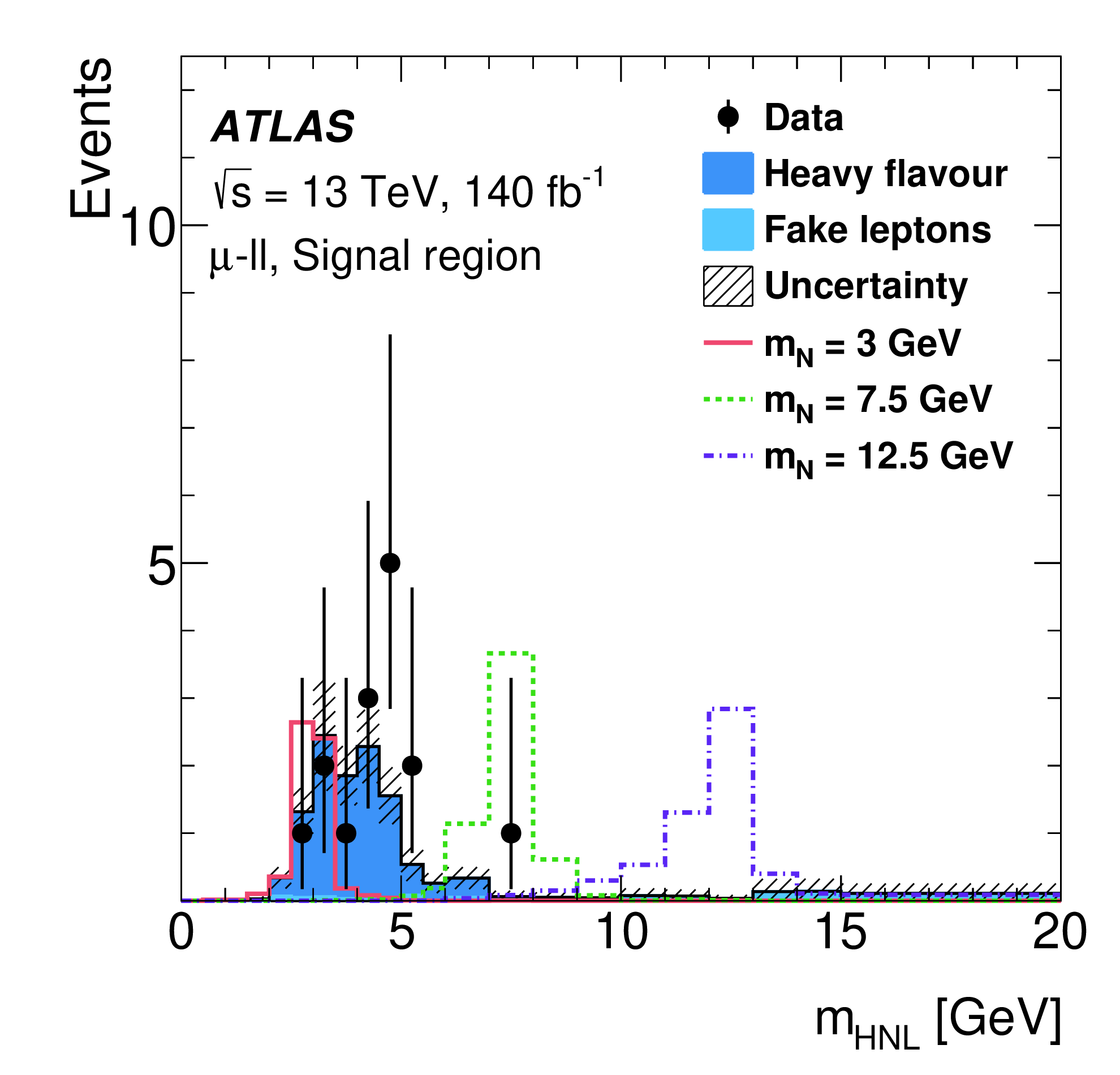
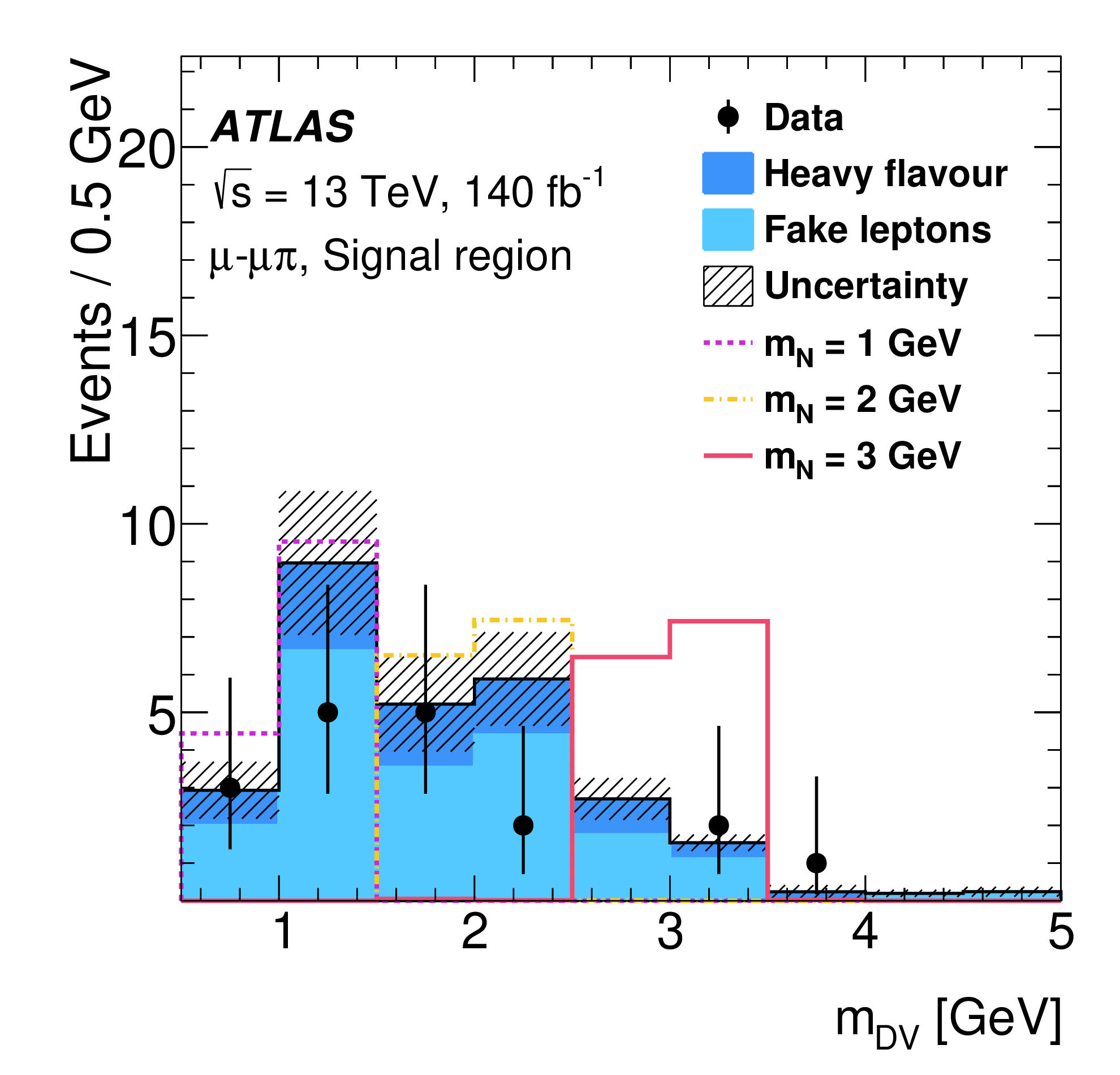
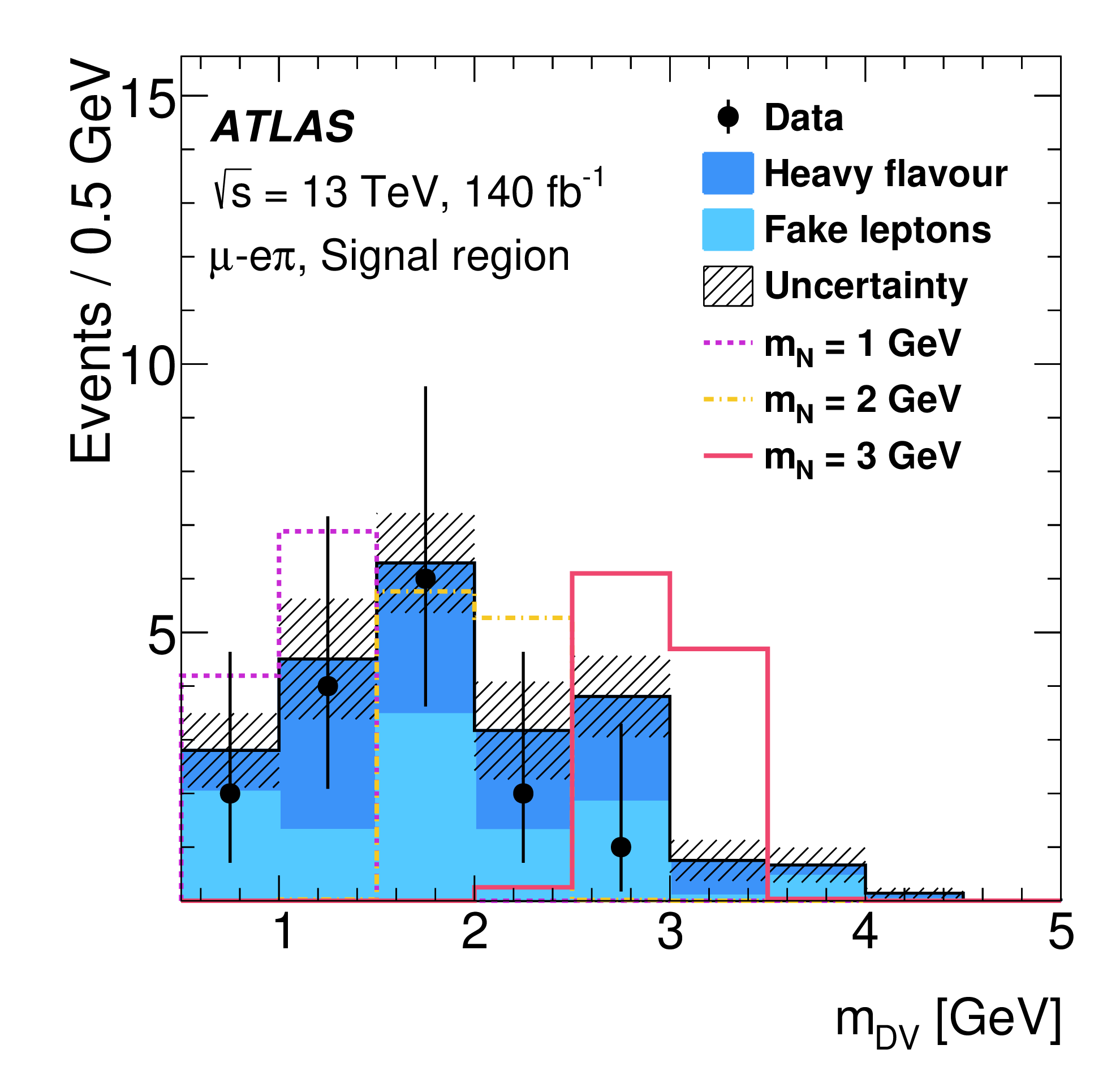
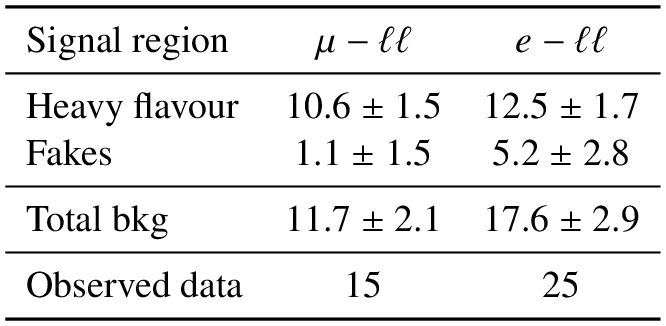

The ATLAS Collab.
Search for heavy neutral leptons ...
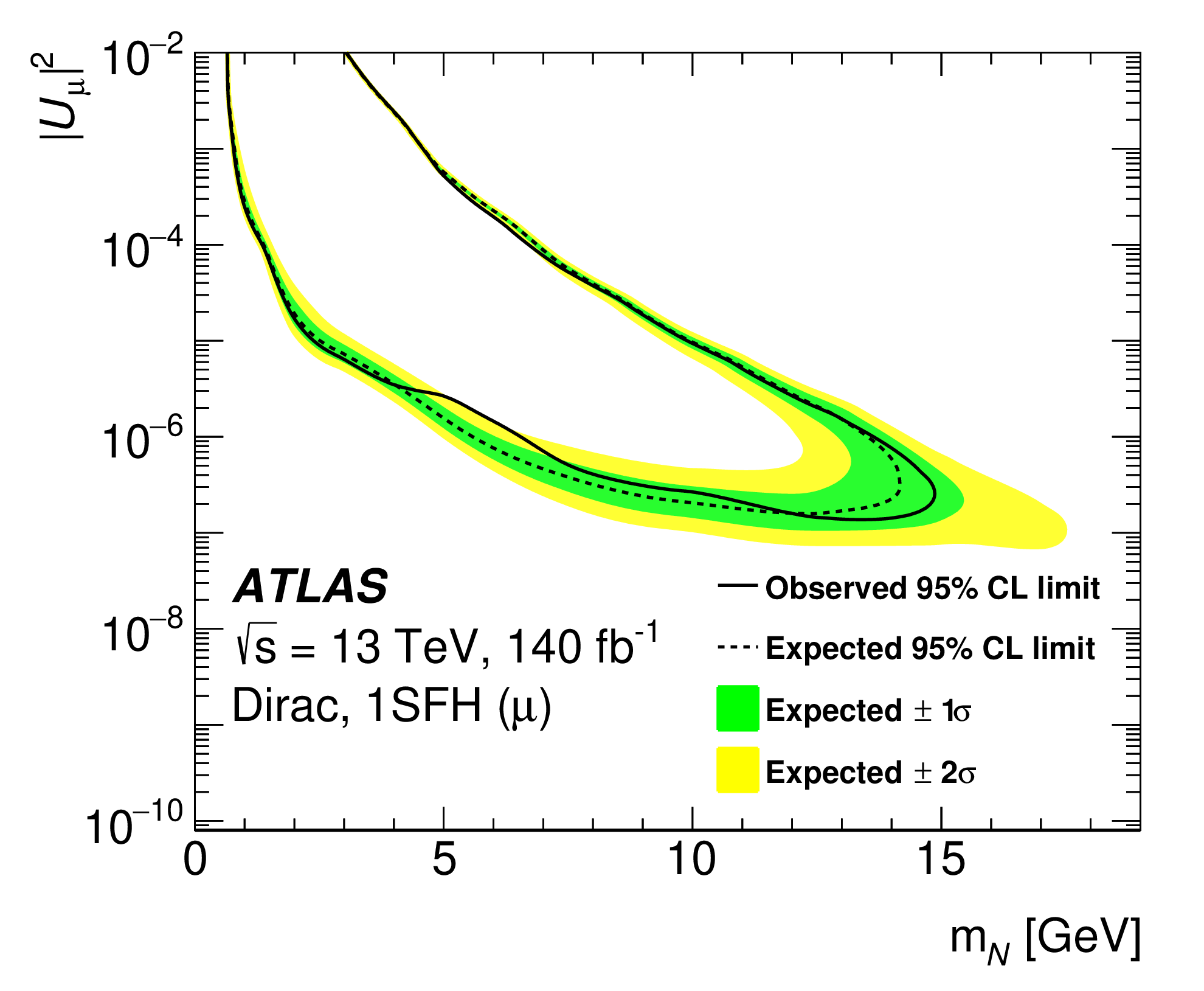
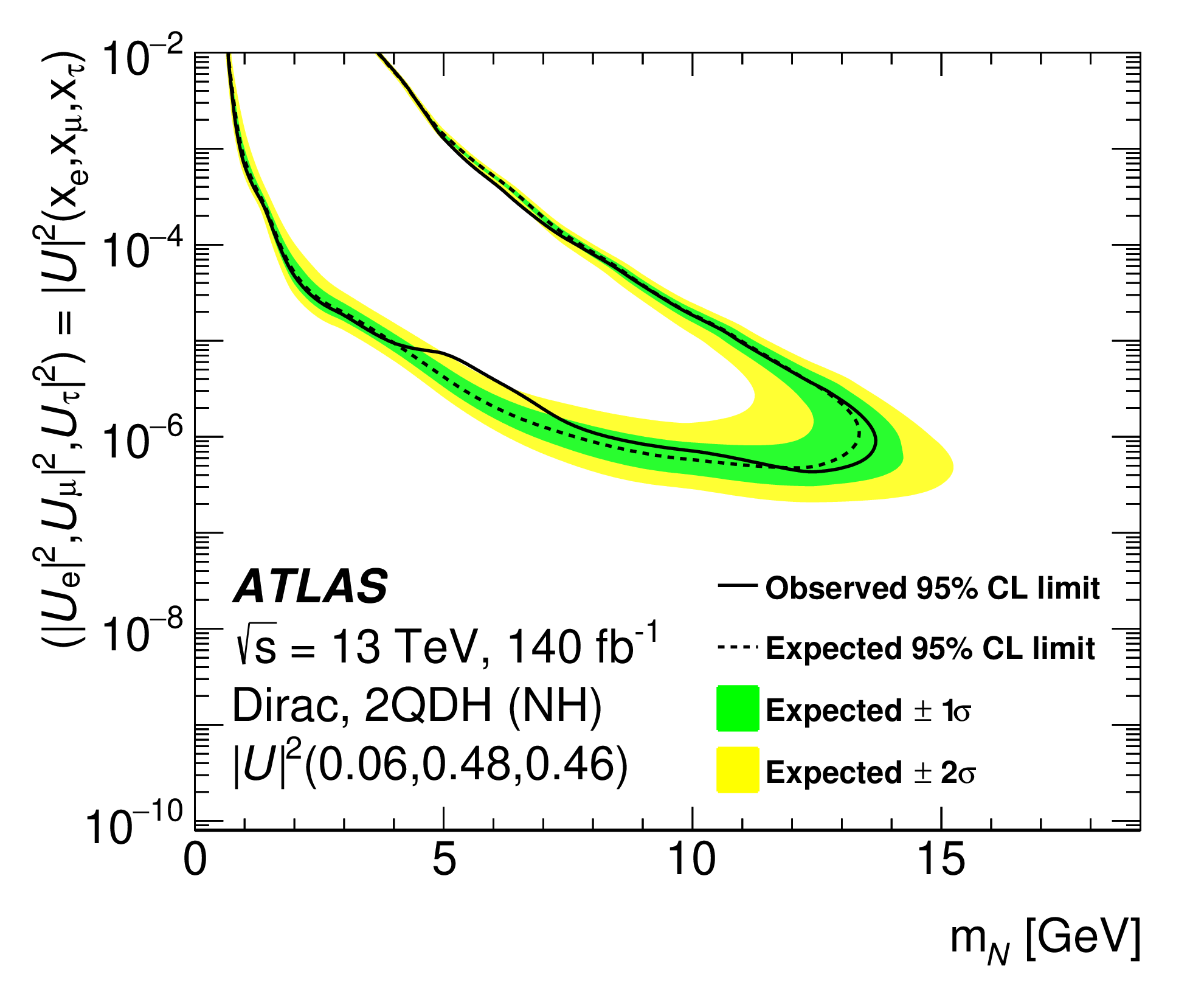
The ATLAS Collab.
Search for cascade decays of charged sleptons and sneutrinos in final states with three leptons and missing transverse momentum in pp collisions at s√=13 TeV with the ATLAS detector
A search for cascade decays of charged sleptons and sneutrinos using final states characterized by three leptons (electrons or muons) and missing transverse momentum is presented. The analysis is based on a dataset with 140 fb−1 of proton-proton collisions at a center-of-mass energy of √s=13 TeV recorded by the ATLAS detector at the Large Hadron Collider. This paper focuses on a supersymmetric scenario that is motivated by the muon anomalous magnetic moment observation, dark mattter relic density abundance, and electroweak naturalness. A mass spectrum involving light higgsinos and heavier sleptons with a bino at intermediate mass is targeted. No significant deviation from the Standard Model expectation is observed. This search enables to place stringent constraints on this model, excluding at the 95% confidence level charged slepton and sneutrino masses up to 450 GeV when assuming a lightest neutralino mass of 100 GeV and mass-degenerate selectrons, smuons and sneutrinos.
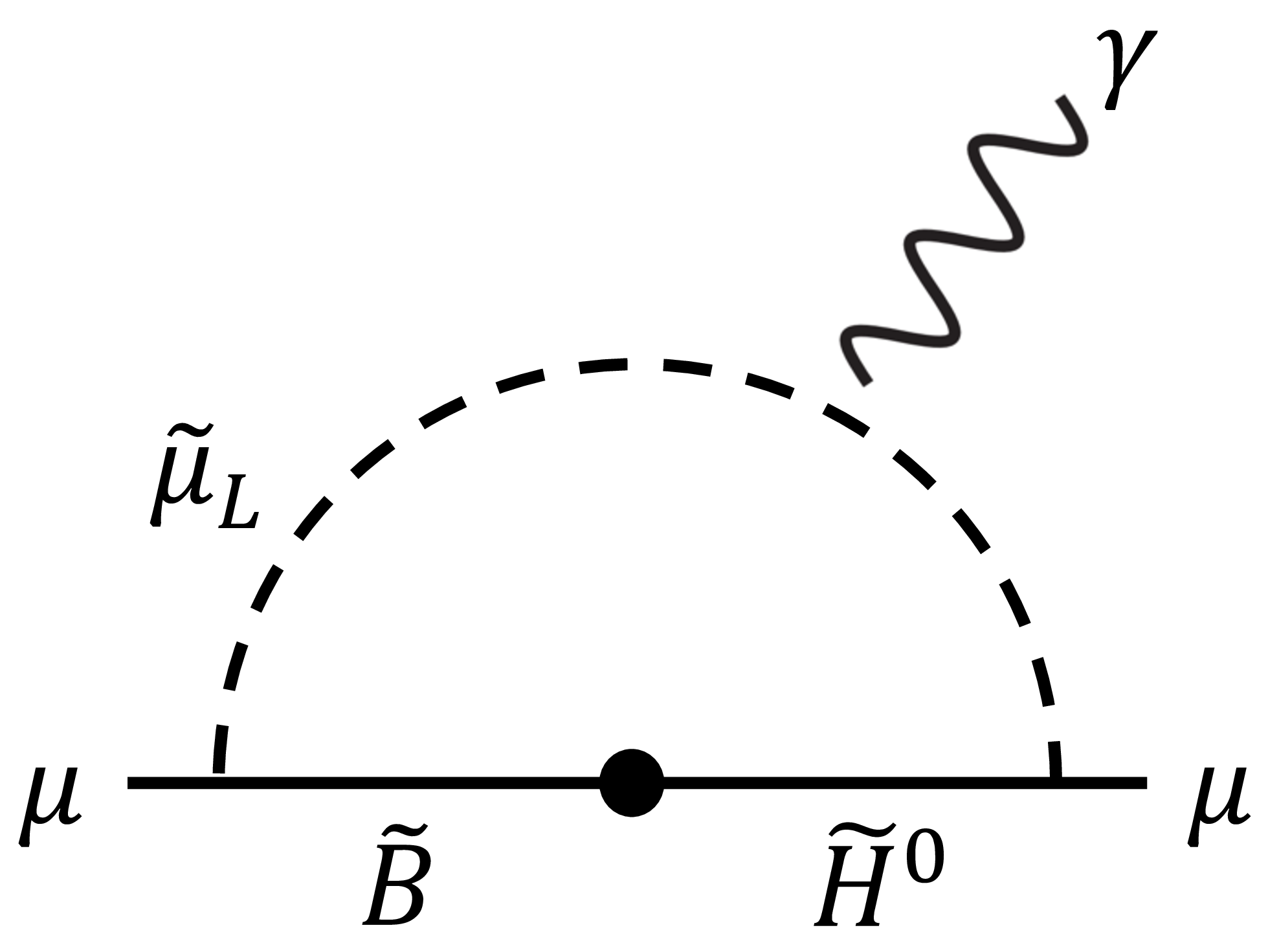
The ATLAS Collab.
Search for cascade decays of charged sleptons and sneutrinos...
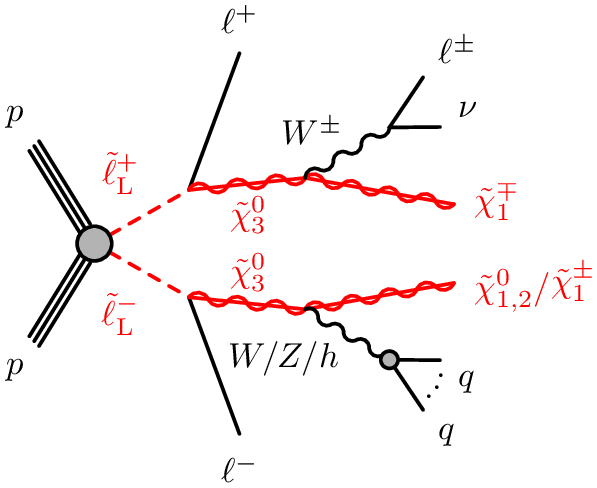
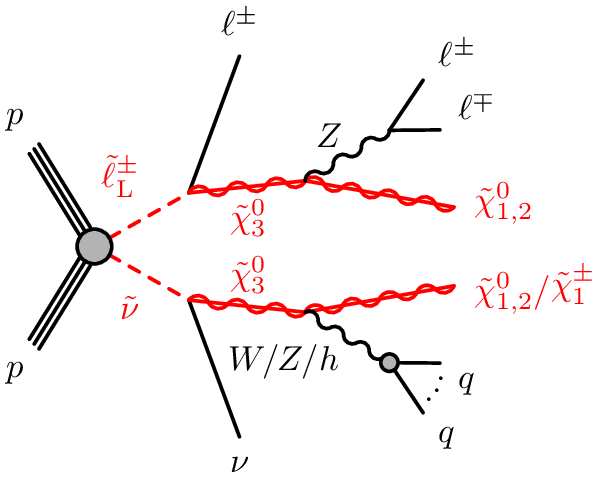

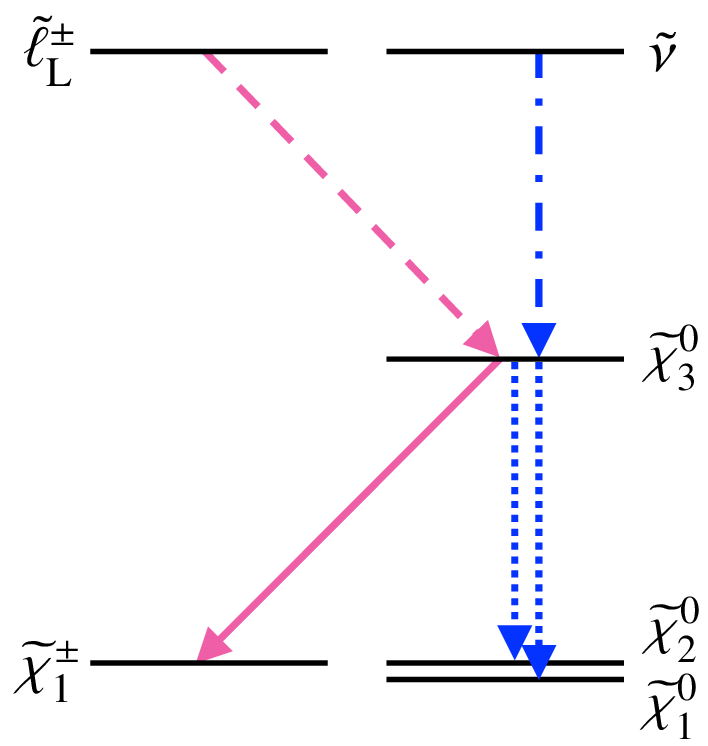
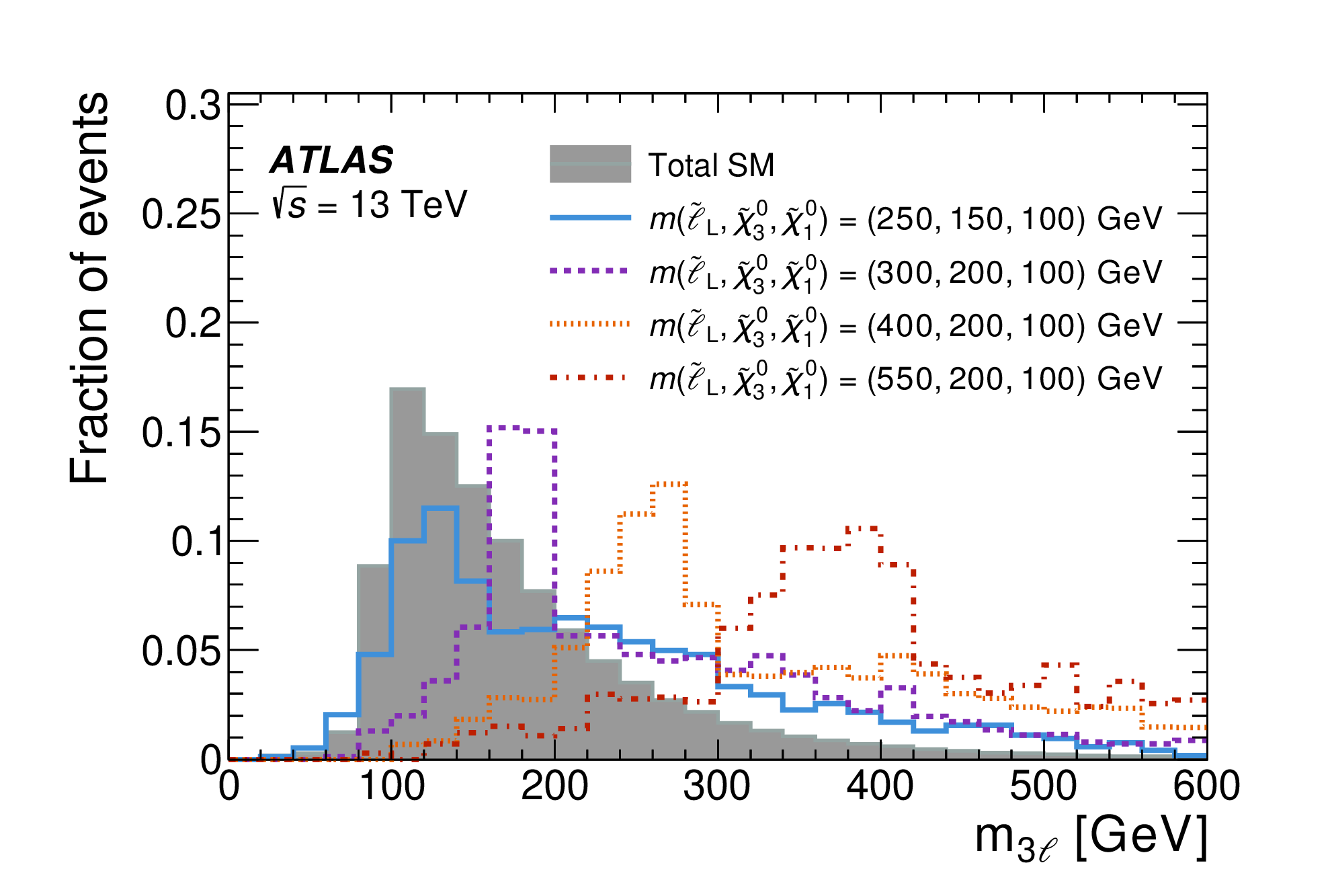
The ATLAS Collab.
Search for cascade decays of charged sleptons and sneutrinos...
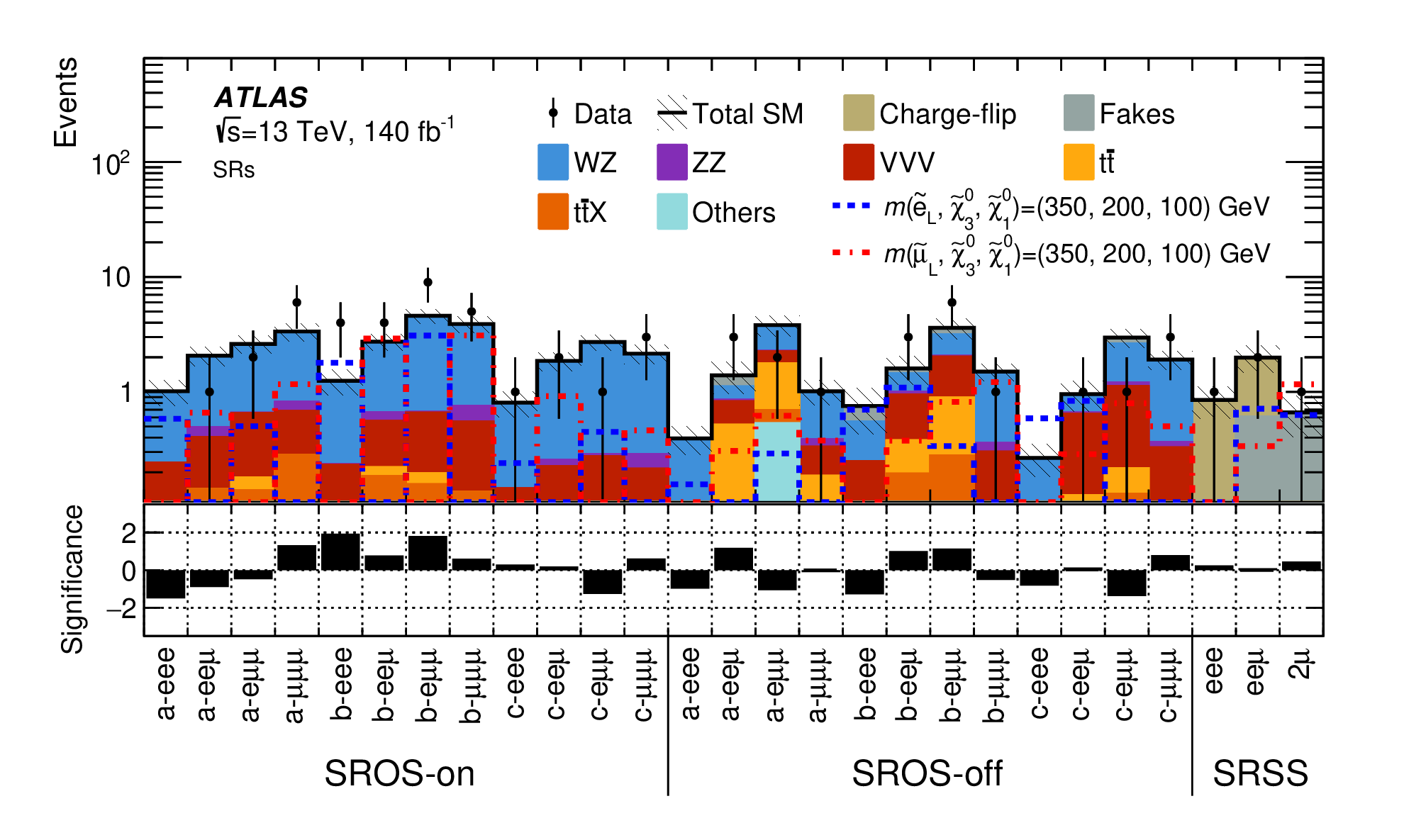
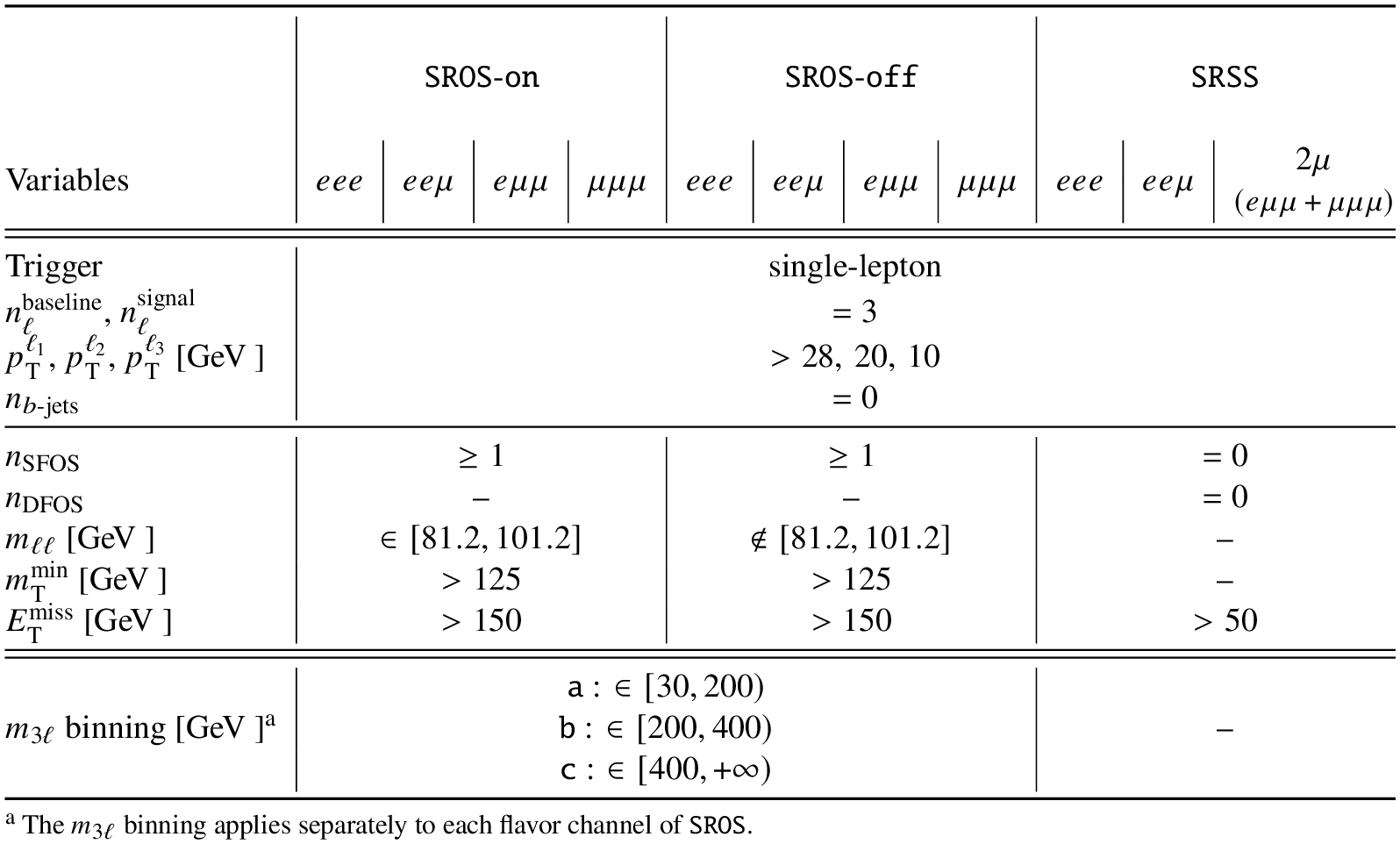
The ATLAS Collab.
Search for cascade decays of charged sleptons and sneutrinos...
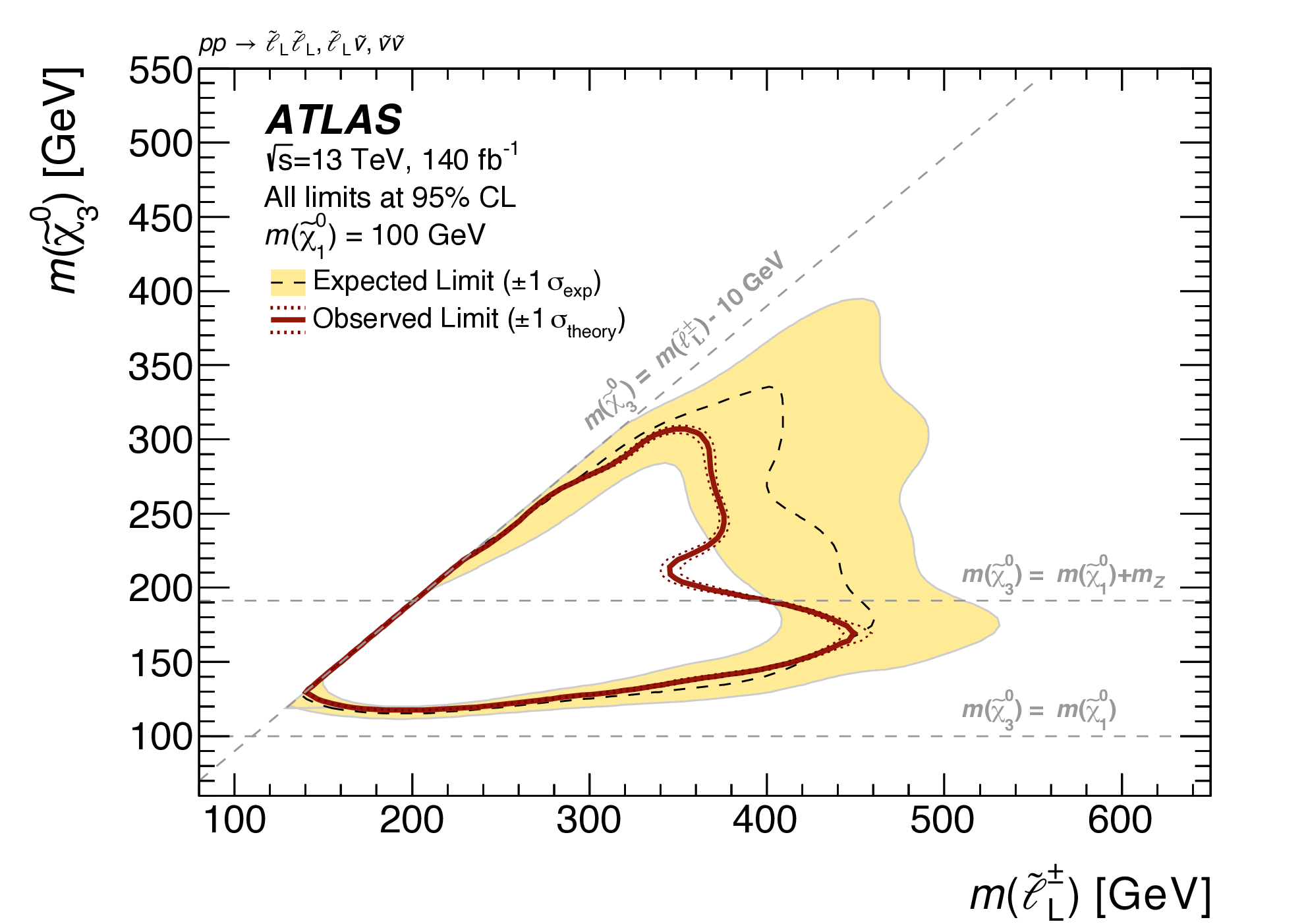
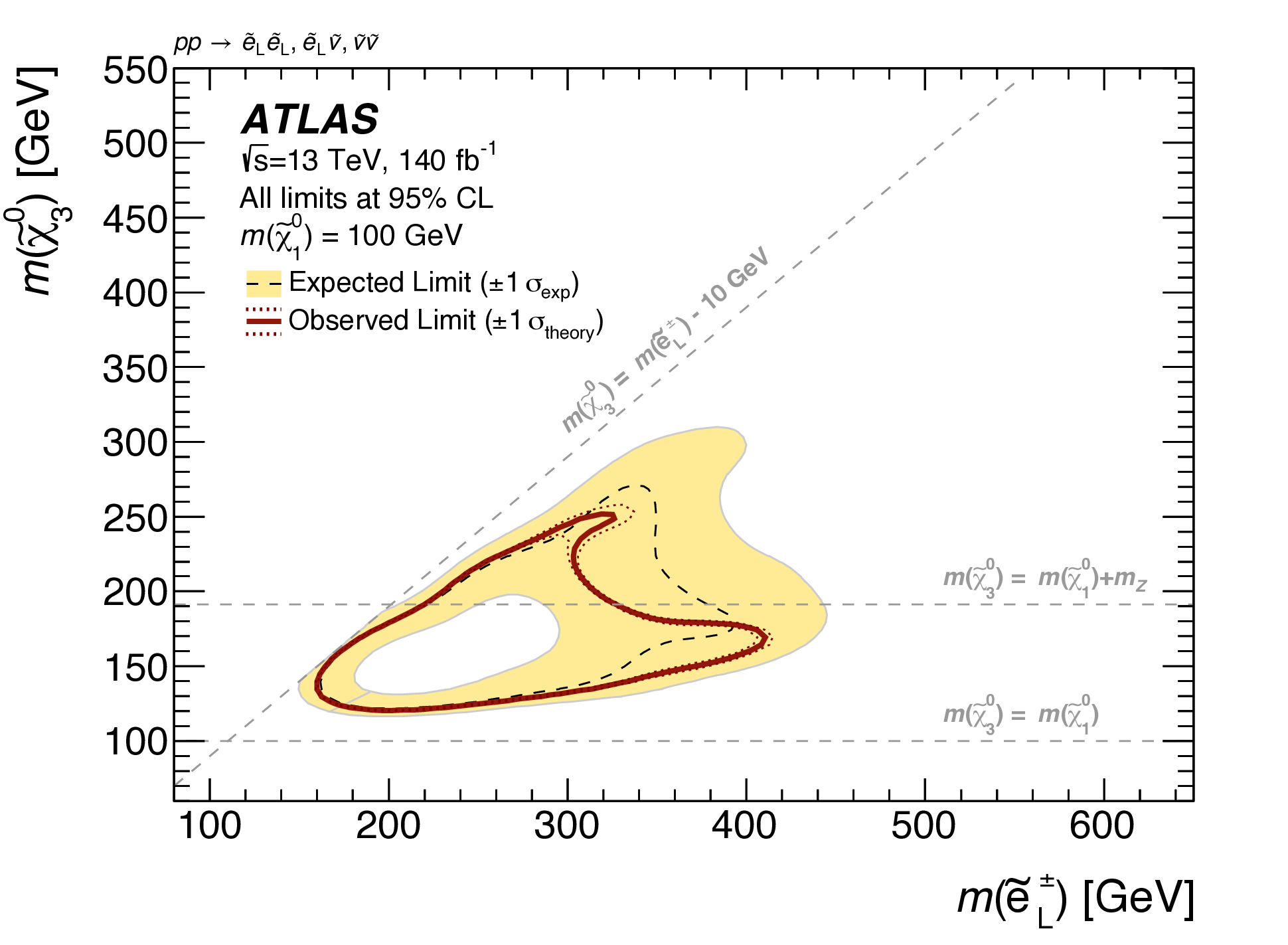
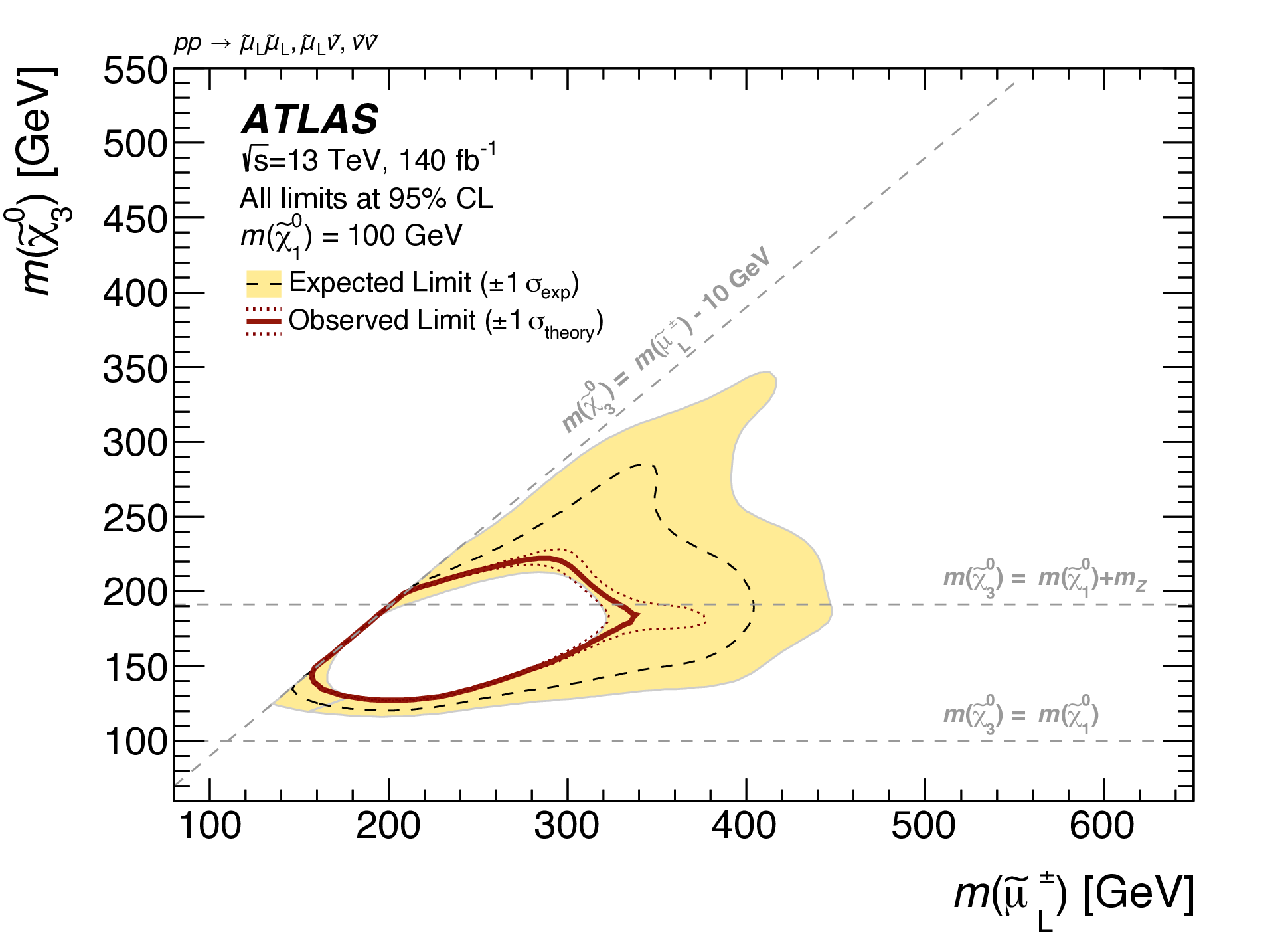
The ATLAS Collab.
Searches for direct slepton production in the compressed-mass corridor in √s=13 TeV pp collisions with the ATLAS detector
This paper presents searches for the direct pair production of charged light-flavour sleptons, each decaying into a stable neutralino and an associated Standard Model lepton. The analyses focus on the challenging "corridor" region, where the mass difference, Δm, between the slepton (e~ or μ~) and the lightest neutralino (χ~01) is less or similar to the mass of the W boson, m(W), with the aim to close a persistent gap in sensitivity to models with Δm ≲ m(W). Events are required to contain a high-energy jet, significant missing transverse momentum, and two same-flavour opposite-sign leptons (e or μ). The analysis uses pp collision data at √s=13 TeV recorded by the ATLAS detector, corresponding to an integrated luminosity of 140 fb−1. Several kinematic selections are applied, including a set of boosted decision trees. These are each optimised for different Δm to provide expected sensitivity for the first time across the full Δm corridor. The results are generally consistent with the Standard Model, with the most significant deviations observed with a local significance of 2.0 σ in the selectron search, and 2.4 σ in the smuon search. While these deviations weaken the observed exclusion reach in some parts of the signal parameter space, the previously present sensitivity gap to this corridor is largely reduced. Constraints at the 95% confidence level are set on simplified models of selectron and smuon pair production, where selectrons (smuons) with masses up to 300 (350) GeV can be excluded for Δm between 2 GeV and 100 GeV.
The ATLAS Collab.
Searches for direct slepton production in the compressed-mass corridor ...

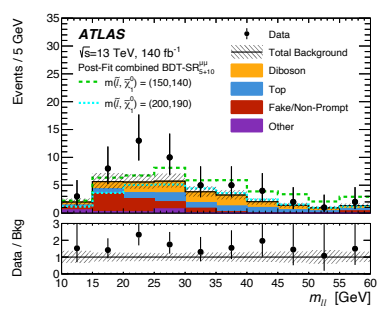
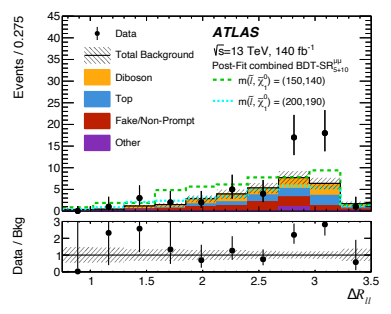
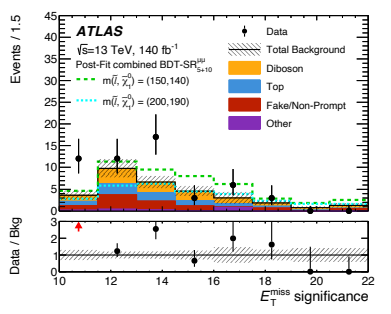
The ATLAS Collab.
Searches for direct slepton production in the compressed-mass corridor ...

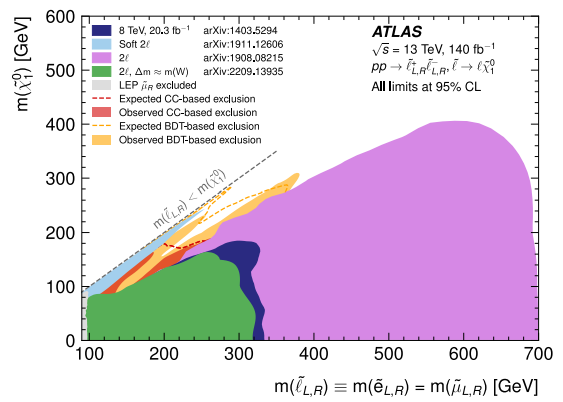
The ATLAS Collab.
Search for a new pseudoscalar decaying into a pair of bottom and antibottom quarks in top-associated production in √s=13 TeV proton-proton collisions with the ATLAS detector
A search for a pseudoscalar a produced in association with a top-quark pair, or in association with a single top quark plus a W boson, with the pseudoscalar decaying into b-quarks (a→bb), is performed using the full Run 2 data sample using a dileptonic decay mode signature. The search covers pseudoscalar boson masses between 12-100 GeV and involves both the kinematic regime where the decay products of the pseudoscalar are reconstructed as two standard b-tagged small-radius jets, or merged into a large-radius jet due to its Lorentz boost. No significant excess relative to expectations is observed. Assuming a branching ratio BR(a→bb)=100%, the range of pseudoscalar masses between 50 and 80 GeV is excluded at 95% confidence level for a coupling of the pseudoscalar to the top quark of 0.5, while a coupling of 1.0 is excluded at 95% confidence level for the masses considered, with the coupling defined as the strength modifier of the Standard Model Yukawa coupling.
The ATLAS Collab.
Search for a new pseudoscalar decaying into a pair of bottom and antibottom quarks...
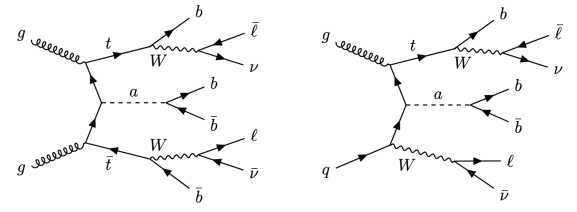
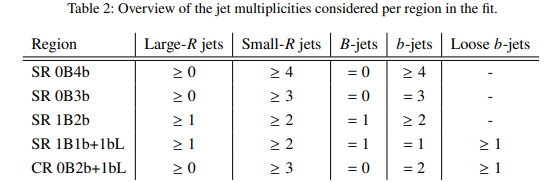
The ATLAS Collab.
Search for a new pseudoscalar decaying into a pair of bottom and antibottom quarks...
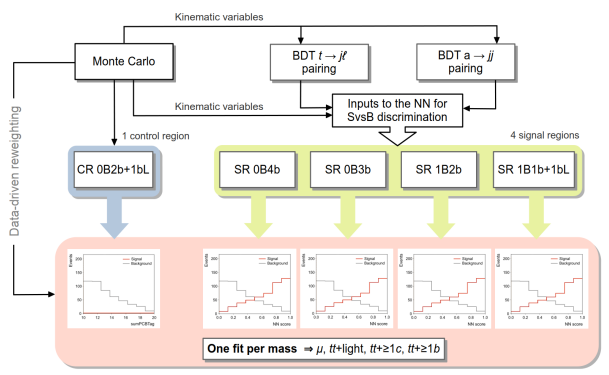
The ATLAS Collab.
Search for a new pseudoscalar decaying into a pair of bottom and antibottom quarks...
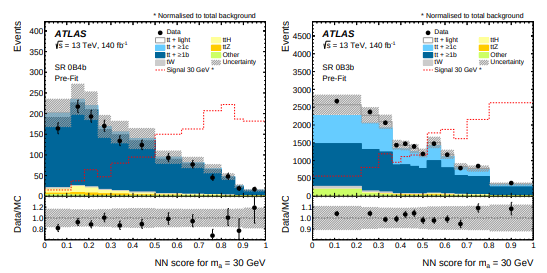
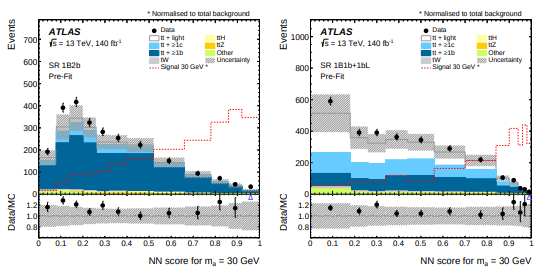
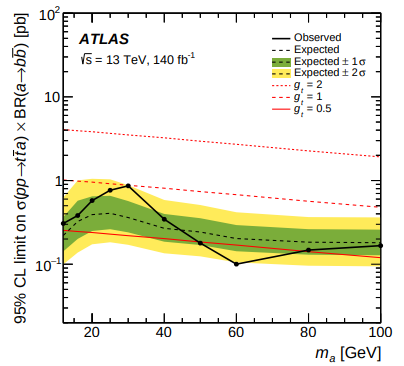
IRIS-HEP
The 200 Gbps Challenge: Imagining HL-LHC analysis facilities
A. Held et al
The IRIS-HEP software institute, as a contributor to the broader HEP Python ecosystem, is developing scalable analysis infrastructure and software tools to address the upcoming HL-LHC computing challenges with new approaches and paradigms, driven by our vision of what HL-LHC analysis will require. The institute uses a "Grand Challenge" format, constructing a series of increasingly large, complex, and realistic exercises to show the vision of HL-LHC analysis. Recently, the focus has been demonstrating the IRIS-HEP analysis infrastructure at scale and evaluating technology readiness for production.
As a part of the Analysis Grand Challenge activities, the institute executed a "200 Gbps Challenge", aiming to show sustained data rates into the event processing of multiple analysis pipelines. The challenge integrated teams internal and external to the institute, including operations and facilities, analysis software tools, innovative data delivery and management services, and scalable analysis infrastructure. The challenge showcases the prototypes - including software, services, and facilities - built to process around 200 TB of data in both the CMS NanoAOD and ATLAS PHYSLITE data formats with test pipelines.
The teams were able to sustain the 200 Gbps target across multiple pipelines. The pipelines focusing on event rate were able to process at over 30 MHz. These target rates are demanding; the activity revealed considerations for future testing at this scale and changes necessary for physicists to work at this scale in the future. The 200 Gbps Challenge has established a baseline on today's facilities, setting the stage for the next exercise at twice the scale.
Key Historical Experiments in Hadron Physics
C. Amsler
The experimental observations that led to the quark structure of matter and the development of hadron physics are reviewed with emphasis on the discoveries of mesons and baryons, starting in the 1940s with the pion and kaon which mediate the strong hadronic force. The evidence for an internal structure of the hadrons consisting of two or three elementary spin 1/2 particles is reviewed. The discoveries of hadrons made of the heavier charm and bottom quarks are described. In 2003 more complex multi-quark hadrons began to emerge. The subsequent developments beyond the early 2000s are covered in the Review of Particle Physics (Phys. Rev. D 110 (2024) 030001). Given the very large number of observed hadrons, the choice of key experiments is somewhat subjective.